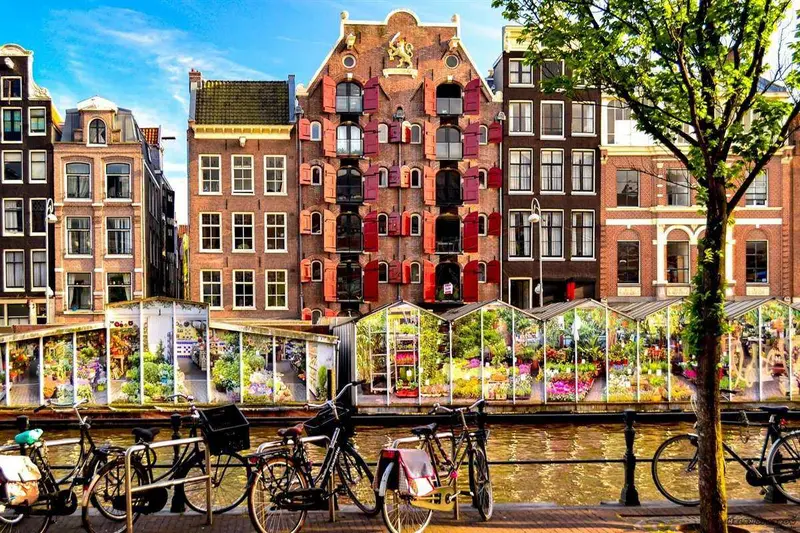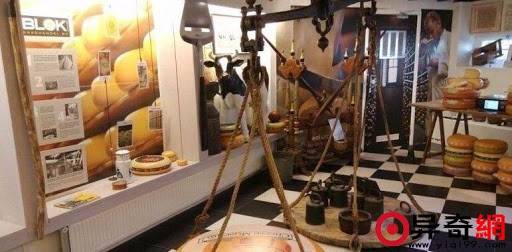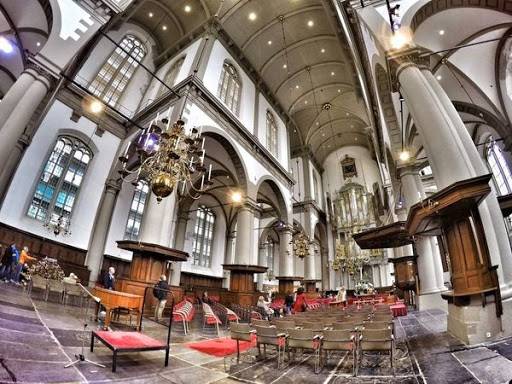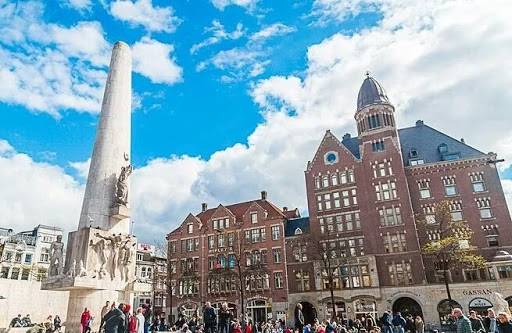Rijksmuseum
Close to the Van Gogh Museum, there is another world-class museum—the Rijksmuseum. Established in 1885, the Rijksmuseum is one of the top ten museums in the world and was named the best museum in Europe in 2015. The museum showcases over 800 years of Dutch art and social history from the Middle Ages to the 20th century through paintings, sculptures, furniture, clothing, ceramics, and other artworks. Among the highlights are the museum's treasures—'The Night Watch' by 17th-century Dutch painter Rembrandt Harmensz van Rijn and 'The Milkmaid' by Johannes Vermeer.
Sex Museum
Founded in 1985, the Amsterdam Sex Museum is located on the bustling Central Station Street. Although the facade is quite inconspicuous, the content is quite rich. However, children under 16 are advised to avoid it, as it might be a bit embarrassing if stopped by the security guard. From sculptures of ancient Greek and Roman phallic worship, to high-definition paintings and photos from multiple angles, to sound and movable dolls, and even large-scale cake and candy exhibitions that might make you lose your appetite, it's truly an eye-opening place!
Heineken Experience
After the original brewery closed in 1988, it was transformed into today's Heineken Experience, allowing beer enthusiasts from around the world to personally experience the birth process of Heineken beer. The museum is divided into the brewery, tasting room, stables, and 4D experience hall. Visitors can not only learn the inspiring story of how Heineken beer grew from a small family brewery to a world-renowned beer brand, but also understand the entire beer brewing process. Additionally, they can even experience the sensation of being brewed and canned in the 4D experience hall, making it even cooler than the Tsingtao Beer Museum!
Anne Frank House
Many people know this Jewish girl because of her 'Diary of Anne Frank'. The fragility and resilience of life depicted in her writings are enough to move everyone. The Anne Frank House is located by the Prinsengracht canal in Amsterdam, Netherlands. It was once the hiding place of Anne Frank's family during the Nazi occupation and the place where Anne wrote her diary. It has now become a famous anti-fascist memorial, preserving the setup described in the book. Visitors can still enter the narrow secret annex behind the bookshelf to experience the two years of anxious and suffocating hiding life of Anne's family.
Amsterdam Canals
When you arrive in Amsterdam, known as the 'Venice of the North', you certainly cannot miss the local canal belt. The total length of Amsterdam's canals exceeds 100 kilometers, featuring around 90 islands and 1,500 bridges. The main three concentric canals—Herengracht (Gentlemen's Canal), Keizersgracht (Emperor's Canal), and Prinsengracht (Prince's Canal)—are primarily residential areas. Layer upon layer, on a good weather day, the buildings and gardens along the canals are simply picturesque. You can choose to take a boat tour or rent a pedal boat to try steering yourself and rowing on the river, which is definitely an excellent way to experience the cityscape of Amsterdam.
Amsterdam Red Light District
The world-famous Red Light District is located in the heart of Amsterdam, in the De Wallen area, between the Central Station and Dam Square along the canals. In the 17th century, Amsterdam was a major hub for world trade, and the Red Light District became a place for sailors from all over the world to seek pleasure. Today, sex work is a legal profession in the Netherlands. As night falls, various window girls dressed scantily, with heavy makeup, and striking poses can be seen. The bold ones can go in if they find someone they like, while the timid ones can watch live shows featuring real-life shameful plays or visit adult stores to broaden their horizons.
Royal Palace of Amsterdam
The Royal Palace of Amsterdam was built during the 17th century Dutch Golden Age. Originally serving as the city hall of Amsterdam, it later became the palace of Louis Bonaparte and subsequently the Dutch royal family. Located at Dam Square, the palace underwent a four-year renovation starting in 2005. The palace retains its classical architectural style, with magnificent carvings and paintings adorning the interior. Viewed from Dam Square, it exudes a regal grandeur, especially at night when it is brilliantly illuminated, reminiscent of the Dutch Golden Age.
Wooden Shoe Workshop Kooijman
The wooden shoe workshop is located in the Zaanse Schans windmill village mentioned above. Wooden shoes, along with windmills and tulips, are known as the 'Three Treasures of the Netherlands.' Due to the low-lying terrain of the Netherlands, medieval Dutch farmers made boat-shaped shoes from cheap and readily available wood, which effectively protected their toes. In winter, they would fill the shoes with straw to keep warm and prevent frostbite, making them comfortable and durable. Although few people wear wooden shoes nowadays, they have become a must-buy souvenir for tourists. Their cute designs and vibrant colors make them not only decorative items but also unique flower pots. At the wooden shoe workshop in Zaanse Schans, visitors can see the entire process of making wooden shoes and even buy a pair as a keepsake if they like.
Westerkerk
Westerkerk was built between 1620 and 1631, located on the banks of the Prinsengracht canal, and is a Protestant church in Amsterdam. The decoration of Westerkerk is relatively simple, but it is the tallest church in Amsterdam, with a spire reaching 85 meters high, topped with the crown of Maximilian I. From the top of the tower, you can overlook the entire city. The 17th-century painter Rembrandt is buried in Westerkerk, and in 1966, the wedding of Dutch Princess Beatrix (Beatrix Wilhelmina Armgard, later Queen) was also held here.
Dam Square
Dam Square is located in the center of the old town of Amsterdam. The Amstel River once flowed through the square, so the first dam on the river was built here, giving the square its name. The square features the National Monument of the Netherlands, which commemorates the victims of World War II. Although Dam Square is not very large, it is very popular. Many famous attractions extend outward from the square, and it is bustling with street performers, pigeons, and horse-drawn carriages.























